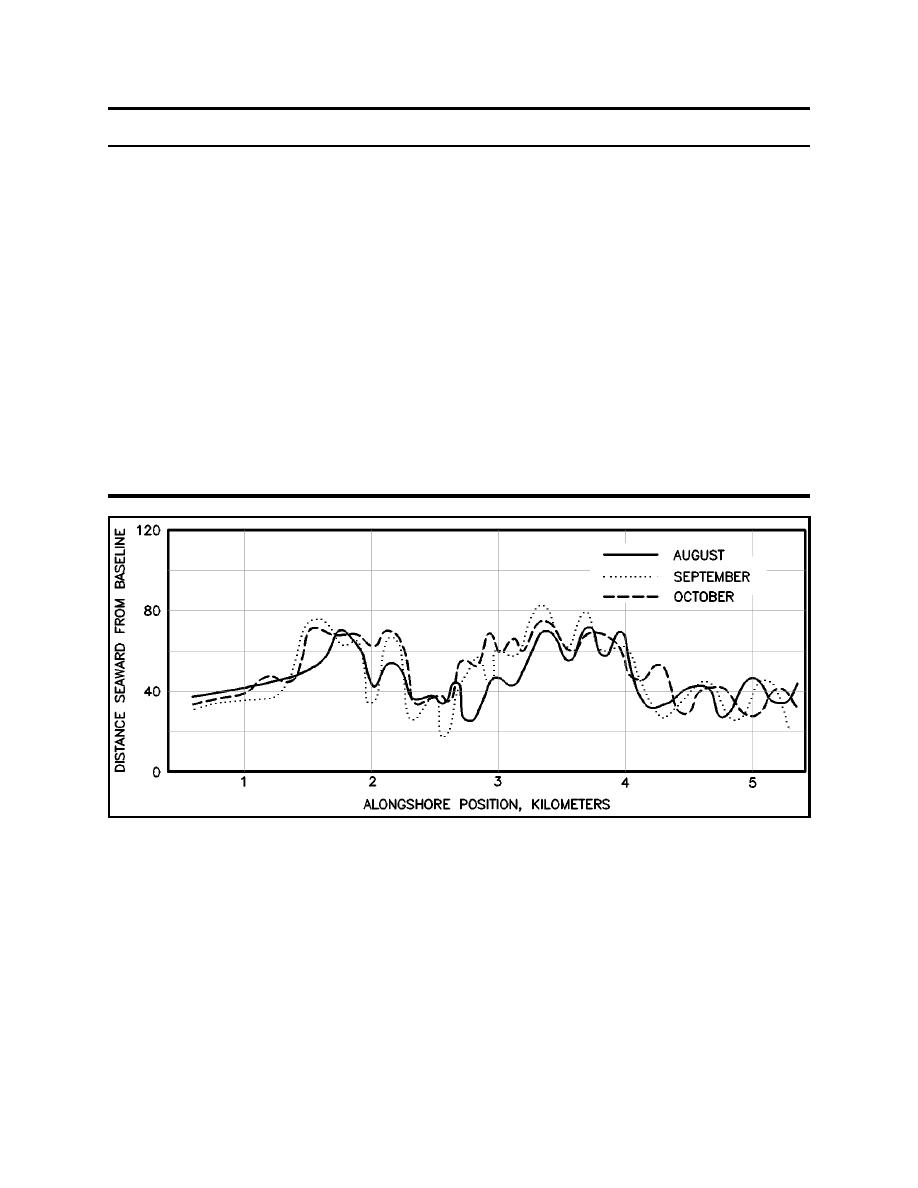
EM 1110-2-1100 (Part III)
30 Apr 02
Table III-2-3
List of Authors Postulating Theories for Cusp Development
Johnson (1910, 1919)
Dalrymple and Lanan (1976)
Dolan and Ferm (1968)
Dubois (1978)
Escher (1937)
Shepard (1973)
Longuet-Higgins and Parkin (1962)
Dolan, Vincent, and Hayden (1974)
Russell and McIntire (1965)
Flemming (1964)
Bagnold (1940)
Krumbein (1944b)
Williams (1973)
Komar (1973)
Kuenen (1948)
Zenkovitch (1964)
Sonu (1972, 1973)
Otvos (1964)
Sonu and Russell (1967)
Sonu, McCloy, and McArthur (1967)
Bowen (1973)
Bowen and Inman (1969)
Guza and Bowen (1981)
Guza and Inman (1975)
Sallanger (1979)
Seymour and Aubrey (1985)
Holman and Bowen (1979, 1982)
Darbyshire (1977)
Darbyshire and Pritchard (1978)
Dean and Maurmeyer (1980)
Figure III-2-24.
Shoreline fluctuations in plan view at Tokai Beach, Japan (after Mogi (1960))
along a shoreline, and that the crescentic bar type of feature is typically at larger scales than the features
associated with rip current cell circulation.
(7) Sonu (1973) details numerous examples of world coastlines with rhythmic shoreline/nearshore
features, and notes the ubiquitous nature of these features via their existence on long uninterrupted coastlines
as well as embayment shorelines between headlands, in tideless seas as well as coasts with tidal ranges up
to 4 m, and on beaches with grain size ranging from sand to gravel. Observations of the planform wavelength
(or alongshore spacing) of the features varies markedly, including 100 to 300 m along the east coast of Florida
(Bruun and Manohar 1963); 64 to 218 m between transverse bars on the low-energy sheltered coast
Longshore Sediment Transport
III-2-51


 Previous Page
Previous Page
